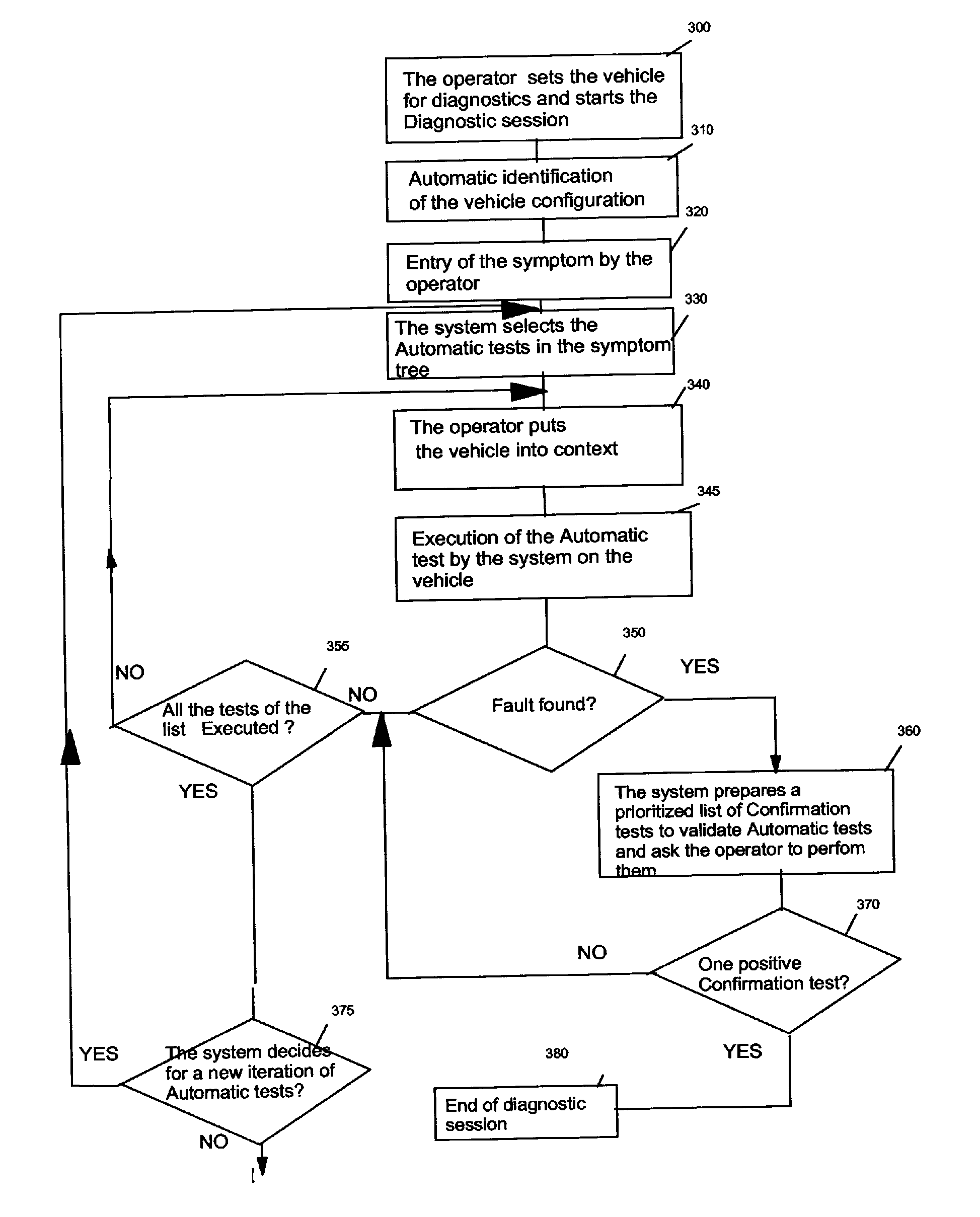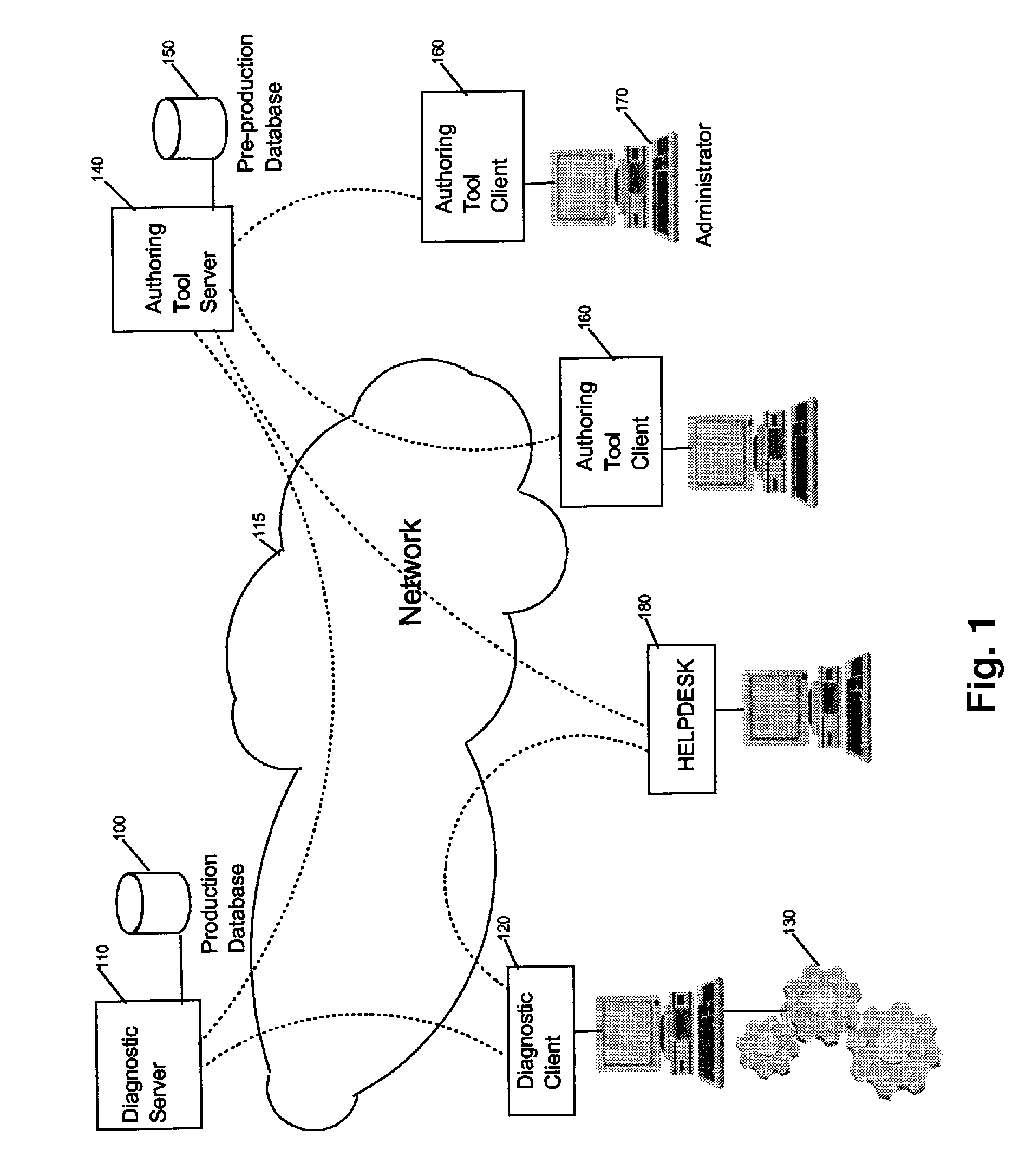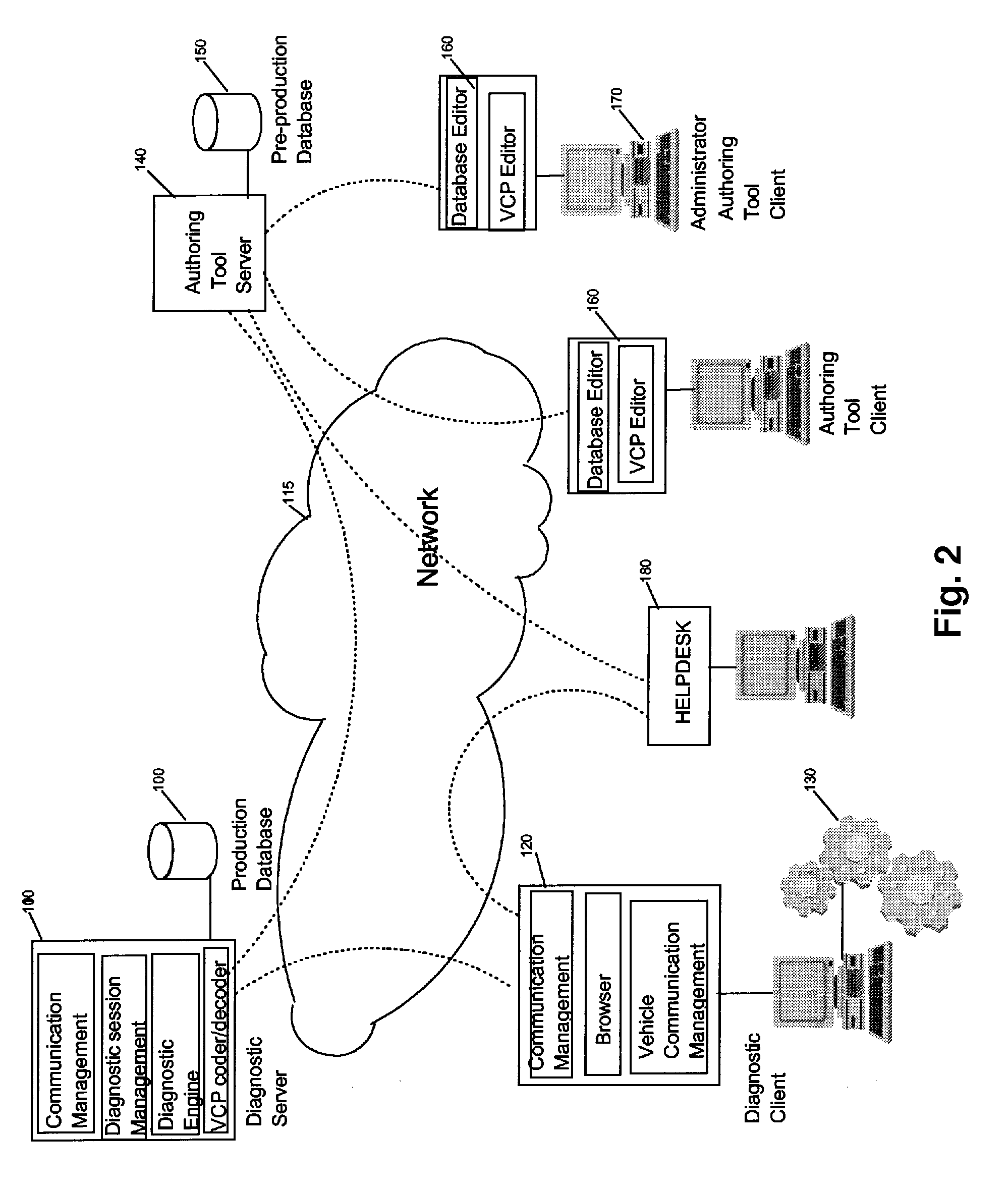Diagnostic method and system
a technology of applied in the field of computer-aided diagnostic method and system, can solve the problems of diagnostic error, no assurance that the appropriate part of the system will be replaced, and the accuracy of the diagnostic results is not guaranteed, so as to achieve easy integration in the data, field experience, and easy to understand
- Summary
- Abstract
- Description
- Claims
- Application Information
AI Technical Summary
Benefits of technology
Problems solved by technology
Method used
Image
Examples
Embodiment Construction
[0040]FIG. 1 illustrates the environment of the method of the invention according to the preferred embodiment which allows, starting from the symptoms of a problem, to identify the smallest replaceable or repairable unit in an automated system (130), such as a car which includes testable components, some of them being uniquely testable through a controller of the system. If the system is a car, the car is usually located in a garage and the technician has a workstation operating the client side (120) of a client server diagnostic application. The workstation is connected to the diagnostic server (10) through a network (115) which can be an Internet network. Through a dialog, the technician is guided to test or set elements of the system in a status which allows the diagnostic server to obtain the right information and reach a conclusion on the solution. The diagnostic server uses a production database (100) for diagnostic data. This database (100) is a shadow of the last operational...
PUM
 Login to View More
Login to View More Abstract
Description
Claims
Application Information
 Login to View More
Login to View More - R&D
- Intellectual Property
- Life Sciences
- Materials
- Tech Scout
- Unparalleled Data Quality
- Higher Quality Content
- 60% Fewer Hallucinations
Browse by: Latest US Patents, China's latest patents, Technical Efficacy Thesaurus, Application Domain, Technology Topic, Popular Technical Reports.
© 2025 PatSnap. All rights reserved.Legal|Privacy policy|Modern Slavery Act Transparency Statement|Sitemap|About US| Contact US: help@patsnap.com



